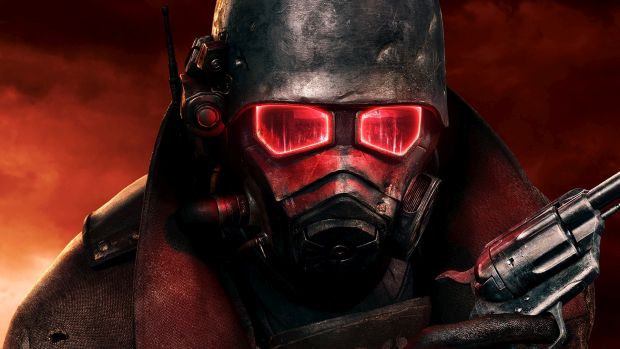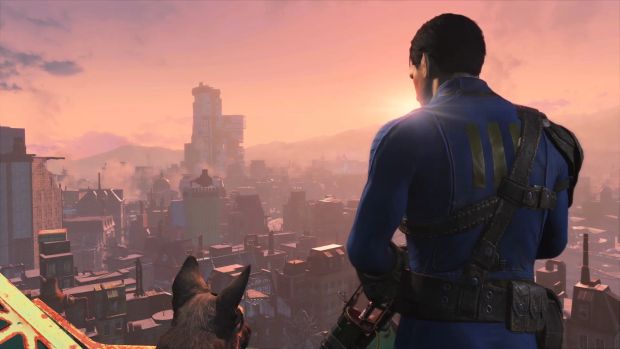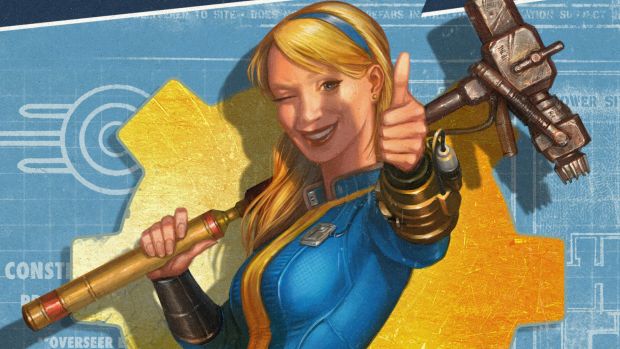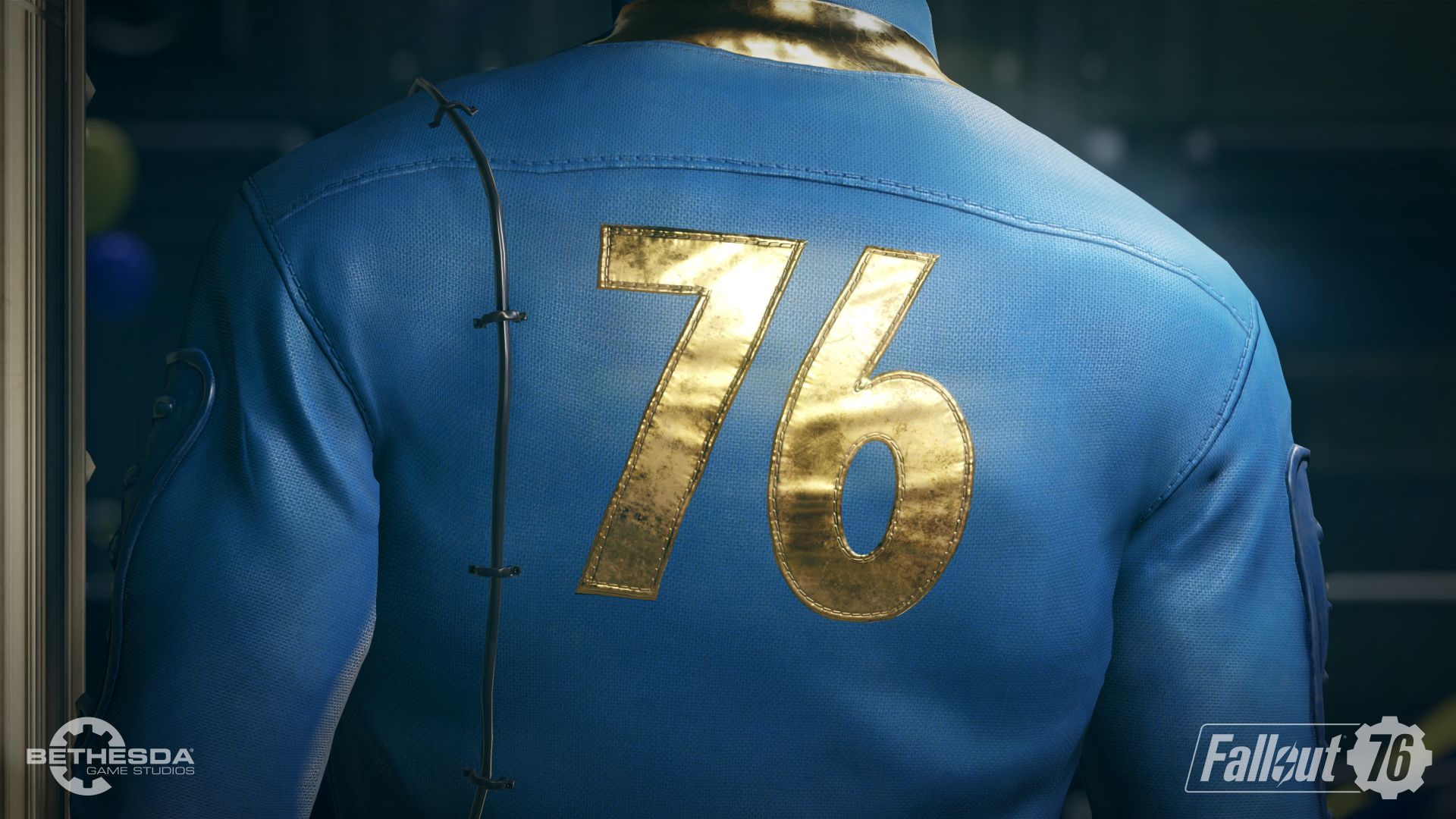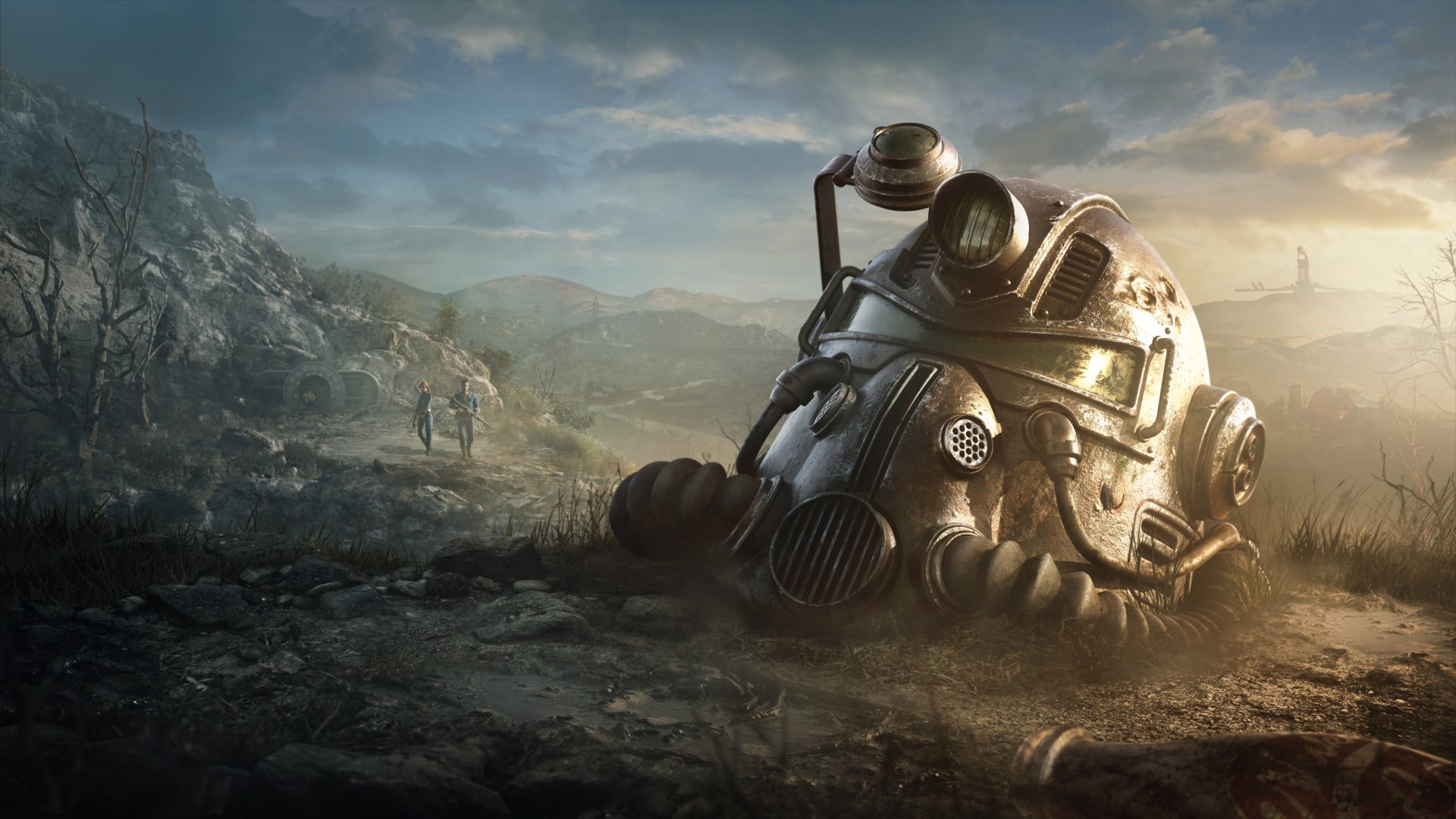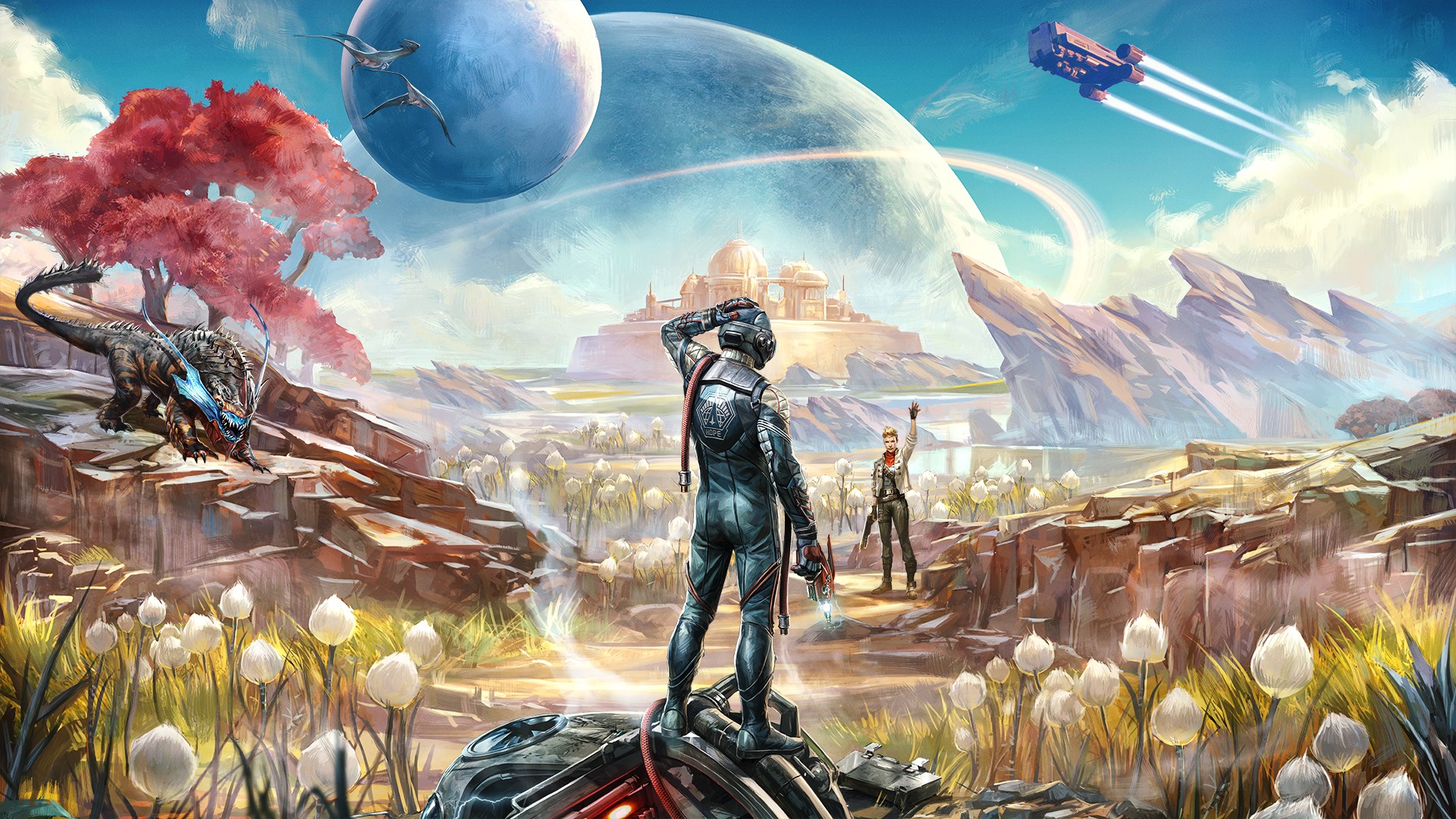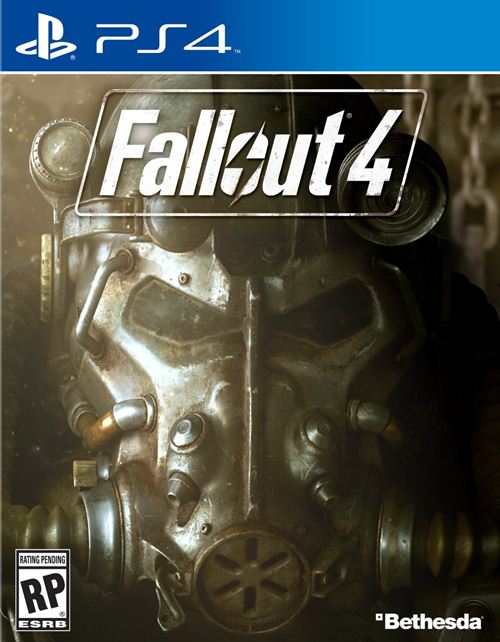
On October 23rd 2077, the bombs fell. This began a cataclysmic shift for life in America. The days of clean drinking water, fancy transportation and retro-futuristic homes were over. It was a time of Supermutants, raiders, Deathclaws and irradiated landscapes. What was left of human life resided in the Vaults, many serving as experiments for different societies with controlled settings. Those that left the Vaults would see what was left of the world, navigating the ruins of a nuclear fallout for their own ends. It’s here that the player’s journey in the Fallout universe would begin.
On October 23rd 2019, Bethesda announced Fallout 1st. The premium subscription service offered access to Private Worlds, a Scrapbox with unlimited storage for components, a Survival Tent for a free fast-travel point, Ranger Armor from Fallout: New Vegas and some Atoms. All of this for $12.99 per month or that elusive “best value” of $99 per year.
For fans who had tolerated many of Fallout 76‘s failings, this may have seemed like yet another ill-timed move on the part of Bethesda. However, it was also the timing of the announcement that brought the online title and the franchise in general to into sharp focus. This was no longer a franchise about delivering a scathing, post-apocalyptic commentary on patriotism, capitalism and humanity while struggling with the harsh reality of survival. Fallout 76 came across as a monument to greed for a product that many felt hadn’t earned its redemption.
To add insult to injury, the Scrapbox was bugged for some and ate their components forever. The Private Worlds were reportedly reused instances that had already been looted. Bethesda announced it was working on a fix for the former while denying the latter.
All these years later, with the ups, downs, deaths and resurrections that the franchise has seen, one has to ask: What the hell happened to Fallout? To answer that question, we have to go all the way back to 2004 when the franchise was still very much the property of Interplay Entertainment.
Interplay will be a very familiar name to old-school RPG fans. The company broke into the role-playing game scene with The Bard’s Tale and Wasteland, the latter being an early predecessor to the Fallout franchise. Interplay was also involved in publishing and brought out some legitimately great games throughout the years like The Lost Vikings, Descent, Giants: Citizen Kabuto and FreeSpace 2. In 1996, Interplay established an RPG development division with Feargus Urquhart as the founder. The studio would go on to create Fallout, a “post nuclear role playing game” that embraced character creation, meaningful choices and tout story-telling.
Fallout would receive a sequel in 1998 while the RPG division received a name – Black Isle Studios. Fallout 2 was also a success, improving on the original with a larger world and even more freedom of choice. Black Isle was seemingly on a roll from that point on – it released Planescape: Torment and Icewind Dale while also serving as publisher for the Baldur’s Gate series from a relatively unknown studio called BioWare. Everything seemed to be going swimmingly for the studio with Van Buren aka Fallout 3 and a non D&D title called Torn in development. Then, in December 2003, Interplay announced that Black Isle Studios was closing.
Interplay was facing severe financial problems much before this, being on the verge of bankruptcy in 1998. Though the company went public, these problems didn’t necessarily disappear. As it was a PC-centric developer in an age where consoles like the PlayStation One were reigning supreme, Interplay struggled to survive. Like the point and click adventure genre, the traditional computer RPG was looking less and less viable as time went on. Losses mounted despite a number of great games published. By 2001, the majority of the company was owned by Titus Software and several cost-saving measures were adopted including the closure of Black Isle Studios (which had its own share of debt) and the cancellation of its projects.
Feargus Urquhart left Black Isle several months prior to establish Obsidian Entertainment (which, again, you might have heard of). When speaking to GameSpot in January 2004, Urquhart speculated that “Interplay has decided to put all of its remaining development effort behind Fallout: Brotherhood of Steel and the Exalted license. Both of those are console titles, while Black Isle was making a PC product. Plus, I would assume that Interplay could make more money in the short term by selling Fallout to another publisher and letting the team go than finishing the product.”
Of course, this wasn’t Fallout Tactics: Brotherhood of Steel, a tactical role-playing game from Micro Forte and 14 Degrees East. This was Fallout: Brotherhood of Steel, a linear action RPG for PlayStation 2 and Xbox. Criticized for its repetitive gameplay and forced grittiness, it was a big failure for Interplay. The worst was yet to come though. In 2005, Titus Software filed for bankruptcy, leaving Interplay with a lot of debt and on the verge of bankruptcy once again. So in 2007, the Fallout IP was sold to Bethesda Softworks. The latter was known for a variety of titles but gained the most fame with The Elder Scrolls series. Around that time, it had released The Elder Scrolls 4: Oblivion to abject critical and commercial success.
There were a few problems though. First is that the company’s RPGs weren’t isometric turn-based titles but first person action RPGs with large open worlds. Sure enough, when Fallout 3 was announced, there was skepticism over its shift to a fully 3D title with real-time shooting and combat. Developed on Bethesda’s Gamebryo Engine, it was also the first Fallout title to not involve any of the original game’s creators.
In hindsight however, Bethesda was making all the right moves with Fallout 3. Though it included over-the-top elements like slow-mo head explosions and blood spatter, the focus was on a more serious title that channeled the franchise’s post-apocalyptic themes of survival in a brutal world. High profile actors like Liam Neeson and Ron Perlman were roped in, the latter famous for his rendition of “War. War never changes.” Though combat was in first person, character creation still formed a large part of the gameplay with skill checks and conversations yielding vastly different results depending on your stats.
Fallout 3 released in October 2008 and received strong praise from critics. Though Fallout 2 director and writer Tim Cain criticized the endings, he appreciated the overall level of detail of the world. Chris Avellone, who also directed and designed Fallout 2, loved the open world and variety of options available despite finding having some issues with the writing. Despite numerous bug and glitches, not to mention some hardcore fans believing that this wasn’t a “true” Fallout, Fallout 3 was a massive commercial success. It shipped 4.7 million units by the year end and is estimated to have sold 12.4 million copies worldwide as of November 2015.
It’s interesting to note that at the time, Interplay was in an agreement with Bethesda to work on Fallout Online. The MMO sought to have player-controlled towns and social areas with roughly 65,000 square miles of terrain been mapped out. Of course by 2009, Bethesda sought to rescind the license due to Interplay apparently not starting development in time. It also didn’t help that Interplay was still selling the Fallout Trilogy which consisted of the original three games. Following numerous years of trials, the two companies settled out of court for $2 million dollars. Bethesda had Fallout Online all to itself while Interplay could no longer sell the original Fallout Trilogy after December 31st 2013.
Following the success of Fallout 3, Bethesda brought in Obsidian Entertainment to create a sequel. The company already had a lot of former Black Isle Studios talent including former Icewind Dale designer Josh Sawyer and Fallout 2 designer Chris Avellone along with former founder, now CEO of Obsidian Feargus Urquhart. The team saw this as an opportunity to use several elements from its vision of Fallout 3 in the new title. The result was Fallout: New Vegas, running on the Gamebryo Engine and featuring much of the same gameplay mechanics as Bethesda’s game.
Though it had a development cycle of just 18 months, New Vegas was praised for its story-telling, quest design, improvements to the visuals and further refinement to the shooting. Many hardcore fans considered it the true successor to the first two games over Fallout 3. The short development cycle gave way to issues like numerous bugs, glitches and crashes to the point where it’s still recommended to play with mods despite numerous updates.
Fallout: New Vegas released in October 2010 and shipped a whopping 5 million copies in just a few weeks. By 2015, it had sold 11.6 million copies and enjoyed its fair share of critical acclaim, though Bethesda infamously denied a bonus to Obsidian for the title failing to receive a Metacritic score of 85+. Bethesda itself had been busy working on The Elder Scrolls 5: Skyrim, which would release in 2011 and set new standards with its open world and scale.
Prior this, however, Bethesda was raising capital to the tune of $450 million. It began expanding its publishing efforts to Europe and opened offices in Tokyo and Frankfurt before expanding to other countries over the years (Moscow being the most recent). Parent company ZeniMax Media was also making big moves. It acquired id Software in 2009 and published RAGE. In 2010, it acquired Arkane Studios, known for Dark Messiah of Might and Magic and for being involved with BioShock 2. The studio would go on to develop the Dishonored franchise before eventually heading up Prey (which was reported to have its own issues, including rumored interference from Bethesda who acquired the IP rights in 2011).
For all intents and purposes, Bethesda was becoming a big deal, publishing a range of titles while cultivating its own studios and properties. However, the main development team often received the same question: What about the next Fallout? When was Fallout 4 coming? It had been several years since The Elder Scrolls 5: Skyrim. What was the studio’s plan for the next Fallout? Unbeknownst to some – and rumored by others – plans for Fallout 4 began in 2009. Though production began in the same year, the title fully entered production in 2013.
Unlike its predecessor, Fallout 4 wanted to be different from the older games – it wanted to channel their tone while introducing a bevy of new gameplay features. Base-building, a fully-voiced protagonist, better gun play, a deeper weapon customization system, hundreds of objects to interact with and the ability to manage an entire settlement were confirmed on top of the previously established V.A.T.S. NPC interactions would be more free-form; animations would be better (at least, that was the idea). The dynamic dialogue system promised a greater degree of player agency. The Creation Engine allowed for sculpting one’s character instead of relying on sliders, not to mention implementing graphical options like motion blur, screen space reflections, an improved material system and much more.
The marketing blitzkrieg was in full effect. A countdown timer ended on June 3rd to formally announce the sequel and reveal the first trailer. Visually, the game was a step-up from the likes of Fallout 3 and Fallout: New Vegas though it was considered inferior to more contemporary titles like The Witcher 3: Wild Hunt and Dragon Age: Inquisition. Nonetheless, Fallout 4 was at the top of many wish-lists. Bethesda capitalized on the hype and released Fallout Shelter, a mobile title that involved managing one’s own Vault. It served as a nice distraction till Fallout 4 launch, despite being criticized for having lunch boxes that could be purchased with real money.
When Fallout 4 released, it received positive acclaim across the board and shipped a whopping 12 million units in the first 24 hours. About 1.2 million copies were sold in the same period. It seemed like another huge success for Bethesda. However, after the initial honeymoon phase wore off, some fan sentiment began to change.
The game’s numerous bugs and performance issues were criticized but it was Bethesda’s overall creative vision that faced the harshest criticism. Skill-checks were effectively gone or rendered pointless with interactions also feeling heavily dumbed down. The S.P.E.C.I.A.L. system felt less like a character defining tool set and more like a straight upgrade system. The story came across as far too similar to Fallout 3 with the added interaction of factions viewed as not impactful enough. Though the gun play was praised and the world fun to explore, many felt that the settlement building system was ultimately irrelevant to what they wanted from the game. It didn’t help that Bethesda’s some of Bethesda’s subsequent DLC packs were focused entirely on settlement building.
Fallout 3 faced skepticism before launch but Fallout 4 was the subject of a more significant, sustained backlash after release. Many felt it was more akin to an open world looter shooter than a full-fledged RPG. Though Bethesda supported the title over the years with numerous bug fixes, mod support and features like Survival Mode, it also used Fallout 4 to launch the Creation Club. This was essentially the company’s attempt to introduce paid mods after failing to do so with Skyrim on Steam once upon a time. The store’s prices, coupled with free mods still being very popular, would see it viewed with scorn. At the very least, Bethesda wasn’t attempt to stifle free mods and continued encouraging their discovery and support within the game itself.
The Fallout brand wasn’t damaged goods by a long shot but the urge for something that felt like a true next-generation sequel became stronger. In the interim, Fallout Shelter was still very successful. Live-service games and loot boxes started rolling in 2016 with the release of Overwatch; the popularity of the live-service model exploded when Fortnite: Battle Royale released by 2017 end. Bethesda brought the Creation Club to The Elder Scrolls 5: Skyrim Special Edition on Xbox One, PS4 and PC, with the expected mixed reception.
It was never formally confirmed when Fallout 76 started development but the trends that Bethesda were chasing would only become more obvious later. On May 30th 2018, Fallout 76 was announced after a 24 hour livestream with the “Please Stand By” test message that the series had become known for.
Rumors beforehand indicated that Fallout 4 would have a sequel spin-off, much like Fallout: New Vegas. Though Bethesda didn’t provide any real details about Fallout 76 upon its announcement, reports from Kotaku’s Jason Schreier indicated that it was an online-only survival title. When E3 2018 finally arrived, Bethesda revealed that Fallout 76 was a prequel to the series and indeed only playable online. Of course, to placate fans, the company also revealed that single-player efforts like the long-rumored Starfield was also in development along with The Elder Scrolls 6.
As the months passed, the developer promised that all post-launch content would be free with the Atom Shop and its microtransactions bringing in revenue. The promise of “only cosmetic” items in the Atom Shop was made and fans awaited the first open beta which would arrive on the Bethesda Games Launcher. When it was finally available, some PC players faced a fairly serious dilemma.
The 50 GB client, upon downloading, had deleted itself, prompting Bethesda’s infamous reply to “not click any buttons on the client for the time being.” Things only went from bad to worse when those who did play the beta reported horrible performance, years-old bugs like game speed being tied to frame rate, the lack of an FOV slider and push-to-talk chat functionality, and countless other bugs and glitches. What was most alarming was that Fallout 76 would officially launch on November 14th, a little over a week after the open beta’s conclusion
Of course, at launch, the game was an unmitigated disaster with its bugs. Reviews circulated quickly and criticized the game’s lack of a compelling story, repetitive side quests, lack of human NPCs, poor gameplay, the list goes on. The title would be embroiled in one controversy after another, whether it was the canvas bag in the Power Armor Edition actually being made of nylon, support tickets with sensitive information being publicly available to view, stealth nerfs, numerous crashes, item duplication woes, or eventually, gameplay-affecting items available in the Atom Shop. Each new major update seemingly broke the game and some bugs, like the endless firing sound from sentry turrets, just wouldn’t die.
The future of Fallout 76 continues to look cloudy. Bethesda has commented on Private Worlds offering mod support. With the former being locked behind a paid subscription, this seems like a way to introduce “approved mods” and perhaps even charge for the same. The Wastelanders update has been delayed and there’s not a whole lot of hope for it having a bug-free launch. Bethesda is seemingly past the point of revitalizing the game – it’s now a matter of keeping whatever players it still has, continuously testing the waters for what’s okay to monetize.
It’s interesting to view the Fallout franchise in retrospect. As a computer RPG series ahead of its time, it suffered from a company that wanted to focus on a more streamlined, action-oriented game while pushing aside the role-playing mechanics. It chased the MMO trend but was quickly out of its depth.
Bethesda seemingly understood what made Fallout successful and translated those gameplay elements into a compelling sequel that would also appeal to a new generation. Overtime, it decided to focus more on streamlining certain RPG elements and focusing on a more action-oriented approach. Lo and behold, Bethesda also took to chasing the latest trends – microtransactions, live-service elements, shared worlds, etc – to cash in. The main difference between the two is that Interplay felt it had to trend-chase for the sake of staying afloat while Bethesda seemingly cashed in on what was considered “hot.”
Hilariously enough, Obsidian Entertainment has had the opportunity to make its envisioned title not once but twice. With Fallout: New Vegas, it brought Van Buren back from the dead. With the recently released The Outer Worlds, it gave fans the spiritual successor to New Vegas that they always craved.
For all intents and purposes, Fallout is a successful franchise for Bethesda. The company isn’t going bankrupt anytime soon and doesn’t have to worry about selling the IP. It could see just how far the well could be poisoned before putting the Fallout franchise on the back-burner and focusing on its other games. Perhaps some kind of shake-up is required for the company to bring the franchise back to its role-playing roots.
Either way, the story of Fallout doesn’t end here. Whether it sinks to new depths or has its legacy carried on by the likes of The Outer Worlds or more hardcore games like Underrail remains to be seen.












